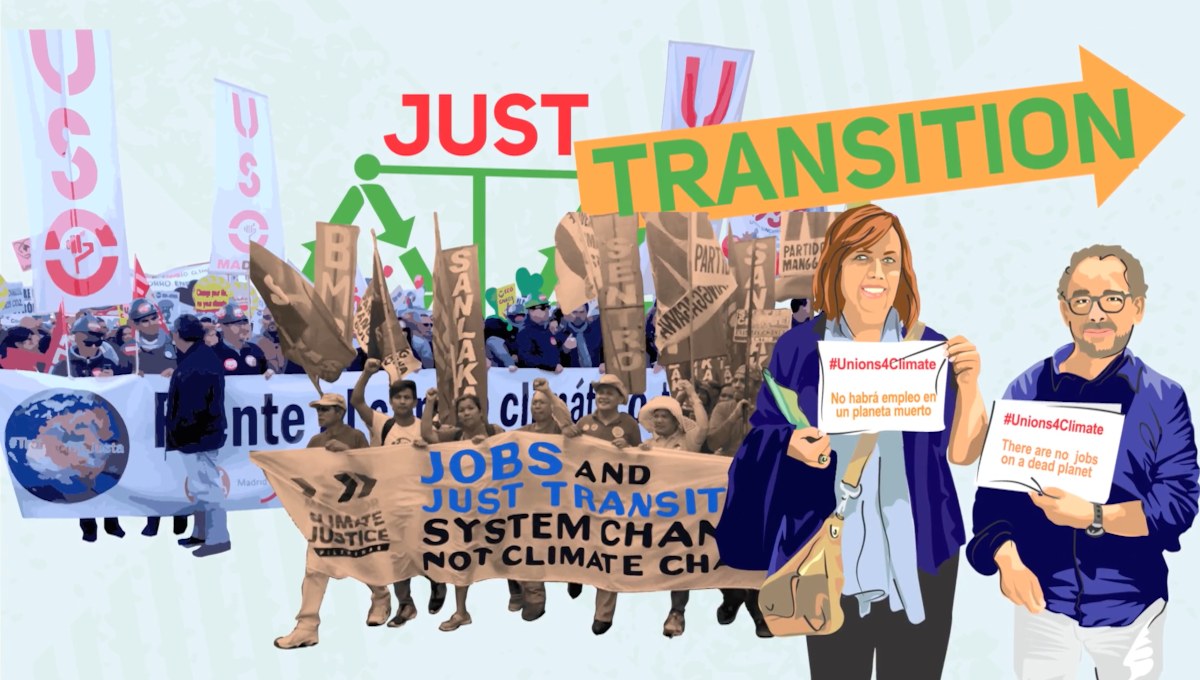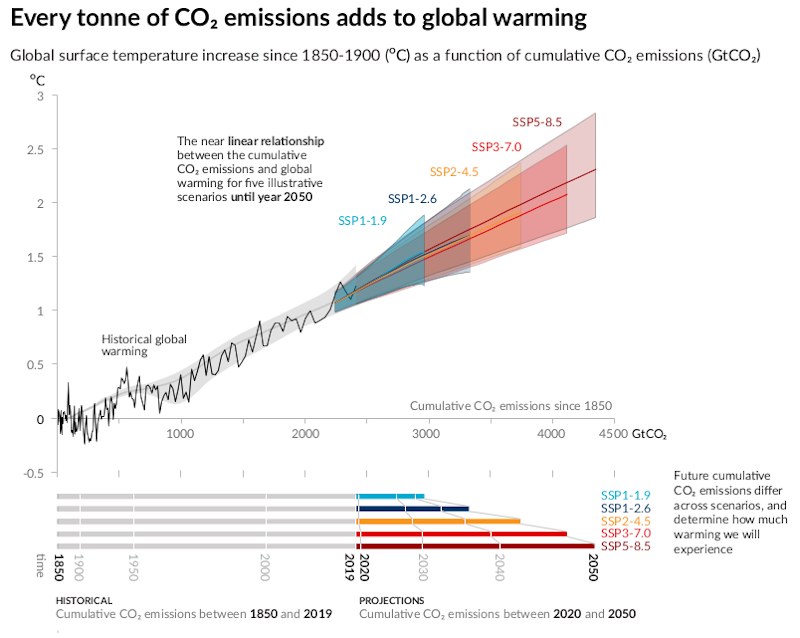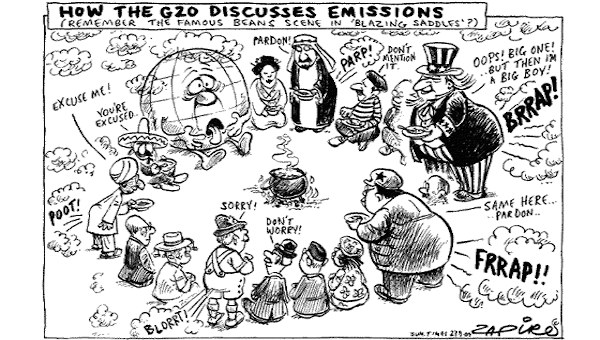Defend and Transform: Mobilizing Workers for Climate Justice
Mobilizing the global labour movement for climate justice and just transition is one of the defining challenges of our times. However, for workers in many sectors, it is unclear how climate issues will affect them specifically, and how they should respond. To date, much of the debate around just transition has focused on workers in industries that are facing job losses. These struggles are important. But in order to build a transformational vision that can mobilize workers in all sectors from the ground up, we need to understand a wider array of industry perspectives.
In this essay, I will discuss three issues. First, I will make the case for why climate justice and just transition are fundamental issues for the labour movement. Second, I will review debates around just transition, and particularly the contrast between worker focused and structural transformation approaches. I will argue that we need to build a bridge between the two perspectives, particularly in scenarios where it is important to engage workers about the future of their specific industries. Third, I will analyse three different scenarios from the transport sector that illustrate the various challenges that workers face: public transport as an example of industry expansion, aviation as an example of industry contraction, and shipping as an example of industry adaption.

Climate Justice and Just Transition
Mobilizing for climate justice means addressing the immense threat of global warming and anthropocentric climate change. The scientific consensus presented by the Intergovernmental Panel on Climate Change is clear. Average temperature rises must be contained to 1.5 degrees, otherwise we face mass loss of life for humans and mass extinction of other species. To stay within the 1.5 degree limit, global greenhouse emissions must fall by 45% by 2030, and to net zero by 2050.
Until now the response of all societies, but particularly the leading capitalist countries in the ‘Global North’, has been grossly inadequate. A report released by the UN general secretary in February 2021 found that governments have only committed to a 1% reduction by 2030. We need faster action, and there are four reasons why this is a trade union issue.
The first reason is clear: the threat to life and livelihoods means that it is a fundamental social justice issue.
The second reason is just transition. Social justice and a good life for all people in the present is as important as preserving life in the future. As societies move to confront the climate crisis, the fundamentally unequal structures of these societies will be made worse, and the less powerful will suffer more. In the transport sector, threats to safety from increasing turbulence in the skies and storms at sea are just two examples of how workers are on the front line of the new risks created by global warming.
The third reason is that climate justice can only be achieved through mass action by workers and the labour movement. Confronting the climate crisis can only happen with the bottom up engagement of workers and communities.
The big gap here is the vital role that workers will have to play in making the transition work in practice. As we have seen during the COVID-19 pandemic, the skills and expertise of many workforces are undervalued and overlooked. The transition to decarbonization in many sectors will be difficult, and tapping into these skills will be necessary if the transition is to work in practice. Organized workers are the best way to mobilize these skills, and therefore trade unions need to connect members with these issues.
At the moment, the active role of workers is largely an afterthought in dominant policy approaches, particularly the neoliberal frameworks of state and capital, but also in left alternatives such as degrowth and green new deals. Although the left alternatives attempt to address the unequal outcomes that workers face, they have not done enough to conceptualize the active role of workers in making a just transition happen.
The fourth reason is that just transition is one of the key battlegrounds for building a fairer society. This is about more than defending what the working class currently have. Ever since the 2008 financial crisis, we have faced a paradox. The economic, political and intellectual basis of neoliberalism has been crumbling, and yet without a compelling alternative, neoliberalism continues to pervade economic and social life. The climate crisis is an external shock that is jolting society toward a different system, but what kind of system is unclear.
If trade unions are active on climate justice, we can make sure the transition transforms our societies into something fairer, more caring, and more equal. But unions need more than bold ideas and smart policy. We also need ways of engaging and mobilizing our mass membership. Being at the decision making table is one thing; we also need to bring power to the table.
For unions, therefore, the politics of just transition is about more than protecting workers and communities. It is also the question of how we mobilize workers to take action on climate issues. Up until now, debates over just transition have suggested two different ways to do this: the worker focused approach and the system change approach.
Worker Focused Versus Structural Transformation Approaches
The worker focused approach starts from the perspective of mitigating the impacts on particular groups of workers in particular industries. Much of the debate around just transition has focused on workers in danger of losing their jobs. This has often focused on workers in coal mining or other fossil fuel extraction sectors. Workers in these sectors have either already lost their jobs, or face losing their jobs in the future.
Unions have put forward a number of different solutions to mitigate against job losses, ranging from seeking to delay the shutdown for long as possible (as in the German coal industry) (Galgóczi, 2020), negotiating access to retraining schemes, redeployment to other jobs – perhaps with guarantees about pay levels, skill levels, union rights, and relocation packages – and cash compensation. The ILO guidelines on just transition also provide a framework that emphasises the importance of social dialogue with a tripartite framework (ILO, 2015).
A major weakness with all of these measures is that it is hard to guarantee that workers in good union jobs will receive an equivalent job at the same skill level. Due to the complex factors that making up working lives, there is little guarantee that workers will end up in a similar position in terms of their income, working conditions and job satisfaction. This is particularly the case with industries that are strongly tied to geographic regions.
Due to these difficulties, workers in some industries have low trust in just transition measures. Studies show that in some places and occupations, just transition leads to a negative reaction amongst workers, as they see it as synonymous with the destruction of their livelihoods and way of life with nothing comparable to replace it (Cha et al. 2020)
Some argue that we need a much more ambitious programme to transform the economy as a whole. According to structural change arguments, it is simply not possible to come up with viable solutions if we look at these industries in isolation. The only way we can address the twin challenges of rapid decarbonization of the economy and full employment is by building an entirely new system.
Sweeney and Treat (2018) of Trade Unions for Energy Democracy argue for a social power approach that calls for a decisive shift away from the neoliberal economic model based on incentives for private sector investment. Instead, they argue, we require a radical shift toward public ownership, control and investment, as this is the only way that decarbonization targets can be met. Furthermore, only by thinking about just transition at the system level, as opposed to needs of specific groups of workers, can we generate the changes that are necessary in order to build a sustainable economy that is capable of providing decent livelihoods for the entire working class.
Arguments for a Green New Deal have a similar logic. There are many different versions of the Green New Deal, but all involve a vision of structural change based on state investment in priority industries (decarbonization), and asserting democratic control of public financing. In the most worker friendly versions, they involve requirements for job creation with strong labour standards, including wage policy (UNCTAD, 2019).
According to this line of argument, we need to think about just transition for society as a whole, and not become trapped in sectoral perspectives that stop us seeing the big picture. Visions of bold structural change are important for engaging workers around climate justice. Problems, arise, however, if the big picture becomes too abstract, and too far removed from the reality of workers’ existing jobs and occupational identities, which are often central to trade union mobilization.
Part of the issue here is that just transition debates have focused heavily on workers facing industry shutdown or industry contraction. Workers in other sectors face quite different scenarios, which in turn require different strategic responses.
Just Transition Beyond the Industry Shutdown Scenario
In addition to the industry shutdown scenario, I think there are four other scenarios that are important to understand. Industry contraction applies to sectors such as aviation, which may need to contract in order to meet its targets in the short term. Industry adaption applies to sectors such as shipping, which need to continue but may require a different technological and structural basis. Industry expansion relates to sectors such as public transport, where decarbonization requires more buses and trains and fewer private car journeys. Industry evolution relates to new sectors, such as solar and offshore wind farms, that are newly emerging and do not have any history of labour relations, but there will not be space to discuss this fourth scenario in this column.
The scenarios are not exact: there are overlaps among the different scenarios. Workers in aviation, for example, may be facing contraction, adaption, and expansion. But it is important to identify what these different challenges are so that workers can relate just transition to their own experience.
In scenarios such as industry contraction, adaption, and expansion, we need to build a bridge between worker focused approaches and more abstract structural transformation approaches. A common theme that links these different sectors is the importance of mobilizing occupational identities. Unlike in an industry shutdown scenario, these sectors will continue to operate in some form, and workers in these sectors may have strong associations with these industries. If we outline a vision for how these industries can operate in a sustainable way in the future, this can create a bridge between the narrow focus of the worker focused approach and the more abstract system transformation approach.

A Bridge
The ITF’s work in the public transport sector is a good example of this bridge. The ITF People’s Public Transport Policy (PPTP) calls for decarbonization through the expansion of public transport services and a modal shift from private car journeys to buses, trains, and greater provision for walking and cycling. It emphasises the social-use value of public transport, including access to public transport for all social groups, and also a decisive political and economic shift with calls for public investment and ownership. Finally, it calls for high labour standards and good working conditions.
The PPTP is a strong proposition for workers and communities. It links decarbonization with job security, high labour standards and public ownership. However, workers in the sector will not get access to good jobs and high standards automatically. Current examples in cities such as Bogota and Manila demonstrate the risks for workers in these sectors. The replacement of the existing minibus fleet with new electric versions can play a major role in reducing emissions. But governments and employers are seeking to fire existing workers and bring in a new workforce. Union campaigns in these cities are fighting for the rights of existing workers to retain their jobs and ensure that this is a just transition.
Even with these struggles, the fact that public transport workers are in an industry expansion scenario means they have strategic advantages compared to workers in other sectors. Aviation, by contrast, is one of the most challenging sectors in which to engage workers in just transition. Aviation has higher greenhouse gas emissions than any other transport mode. There are major technological challenges for reducing emissions, and the sector has been slow to invest in decarbonization. Game changing technologies such as hydrogen fuels and battery powered aircraft are at least 20 to 30 years away. Shorter term options such as improved aircraft design, alternative fuels, and electrification of airport operations could bring down emissions. But it is uncertain how quickly these changes can be introduced.
All of this adds up to an uncertain future for aviation workers, including fears of job losses. Aviation has become a symbolic target for social movements and NGOs who are calling for the industry to be radically scaled down. This criticism has created a defensive mindset amongst some aviation workers, who have already faced systematic attacks on working conditions for the past two decades.
The aviation industry remains highly unionized in some countries. It is also an industry that has social use value and cannot be easily replaced. In order to mobilize aviation workers for climate justice, we need more than an economy-wide structural transformation narrative. We need a vision of what a sustainable aviation sector could look like with good union jobs and greater workplace democracy. This vision will require some structural change, such as some short haul flights shifting to lower emission modes such rail, which could mean fewer jobs compared to pre-COVID-19 levels. It may also involve changes to existing jobs to reflect greater use of emissions-reducing technologies, such as electrification of airport operations and alternative fuels production. The key point is that we need to show there is a pathway to a sustainable industry, so that workers can see where they fit into it.
One reason we need to illustrate the pathway to a sustainable aviation industry is the importance of occupational identities. The identification of workers with their occupation or industry has long been a double-edged sword for the trade union movement. For example, the identification by cabin crew as aviation workers can generate powerful solidarities amongst workers both nationally and internationally. At the same time, it can also make it difficult for workers to see beyond the perspective of their industry. The trade union movement often has to balance these tensions, particularly when it comes to climate justice and just transition. Showing the pathway to a sustainable aviation industry is important in order to mobilize workers’ identification with their industry, and also the solidarities that have built up around it.
Shipping represents a different challenge, one of adaption. Shipping has a more straightforward technological path to decarbonization. Technologically, it is easier to develop alternative propulsion methods on the sea than in the air. And there is general agreement of the importance of maintaining the shipping industry in order to transport goods essential for social needs. However, the need for shipping to decarbonize is just as urgent: 80% of the world’s goods are transported by sea, and shipping emissions are at a similar level to aviation. Furthermore, governments and employers have been slow to set meaningful emissions targets for the shipping industry.
There is an urgent need for shipping to adapt in order to transition to a zero carbon industry. Currently the major concern for workers is not job losses but changes to working practices. One of the most likely changes will be the introduction of alternative fuels. Some of these fuels, such as ammonia, could reduce shipping’s carbon footprint by as much as 50%. There are also a wide variety of other changes to operational management that will be necessary to make shipping more efficient.
The challenge for mobilizing seafarers around climate justice and just transition is twofold. Firstly, there is a need to educate seafarers about why these issues are important to them. The oceans are one of the front lines of the climate crisis, in terms of rising sea levels, threats to marine life, and increased storms and dangerous weather. As their workplace is on the ocean, seafarers have a natural role as stewards of the sea. However, after several decades of foot dragging by employers, unions have an important role to play in educating seafarers about the changes that are necessary.
Secondly, it is vital that seafarers have an active role in shaping the changes that will take place. Health and safety is a key issue, and given the dangers of alternative fuels such as ammonia, it is vital that seafarers are not put at risk by unproven technologies and unsafe systems. It is now obvious that the whole training system for seafarers will also need to change. Current projections show that different fuel types will require much more regular training on different engine types and fuel propulsion systems. The introduction of greater digitalization could change the nature of existing jobs. Some employers are calling for a programme of massive investment to speed up the changes that are needed. The shipping industry is on the cusp of major change, and seafarers’ unions need an active role in shaping these changes at both the global and workplace levels.
Beyond Concerns About Job Losses
Climate justice and just transition are fundamental issues for trade unions. In the transition to a sustainable economy, the global labour movement needs to both defend what workers currently have, and transform the system into something better, with higher labour standards and more workplace democracy. To achieve this, we need to mobilize the broad base of the trade union movement, and to do that we need to understand these issues from multiple perspectives. In particular, we need to broaden our understanding of just transition beyond concerns about job losses.
By looking at three different scenarios from the transport sector, with public transport as an example of industry expansion, aviation as an example of industry contraction, and shipping as an example of industry adaption, I have discussed the strategic challenges that workers in different parts of the economy face. One thing that all of these scenarios have in common is the need to build a bridge between workplace focused issues and a broader narrative of structural change.
A key task for the trade union movement, therefore, is to engage workers on climate justice at industry level to build visions for specific industries that show the pathway to a sustainable economy. Furthermore, building a broader narrative means going beyond questions of decarbonization to address more fundamental questions about power and purpose. The COVID-19 pandemic has demonstrated the importance of building our economies around what really matters to our societies. Engaging workers around the future of their industries will logically involve debates about what these industries are really for, and therefore what kind of overall economy we really want. •
References
- Cha, J. M., Price, V., Stevis, D., Vachon, T. E., and Brescia-Weiler, M. (2020) “Workers and communities in transition: report of the just transition listening project,” Just Transition Listening Project.
- Galgóczi, B. (2020) “Just transition on the ground: Challenges and opportunities for social dialogue,” European Journal of Industrial Relations, 26(4), pp. 367–382.
- ILO (International Labour Organization) (2015) Guidelines for a just transition toward environmentally sustainable economies and societies for all, Geneva: International Labour Organization.
- Sweeney, S., and Treat, J. (2018) “Trade unions and just transition: the search for a transformative politics,” Trade Unions for Energy Democracy Working Paper #11.
- UNCTAD (2019) Trade and development report 2019: financing a global green new deal, Geneva: United Nations Conference on Trade and Development.
This article first published on the Global Labour Column website.





